
Think you know where in the beer world this photo was taken?
As always, please leave your answer as a comment.

Think you know where in the beer world this photo was taken?
As always, please leave your answer as a comment.
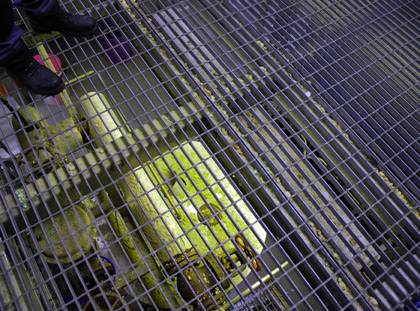
That’s hop dust below.
The photo shows the brew deck at Oakham Ales in Peterborough, located an hour (by train) north of London. The green underneath is the hop dust. Much has been automated at Oakham, so automated a brewer can sit in the local pub and use his phone to control some brewery operations, but not everything.
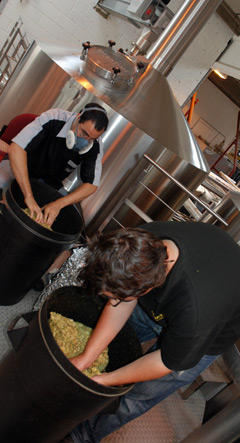 That includes adding hops to the brewing kettle and the hopback. Oakham uses a good share of hops, American hops, in whole cone form.
That includes adding hops to the brewing kettle and the hopback. Oakham uses a good share of hops, American hops, in whole cone form.
After the hops are shipped to the UK in bales, hop merchant Charles Faram repackages them into 5 and 20 kilogram packages (called freshpacks). About 55 percent of the hops Faram sells are in cone/leaf form (compared to 90 percent in 1989). The hops in the freshpacks end up quite compact, so brewers cannot simply open a package and dump hops into the kettle.
That’s why the workers pictured to the right (in this case at Meantime Brewing in London) have to break up the hops by hand.
And not everything ends up in the kettle.
Oakham is bigger than what’s defined as a microbrewery in the US — production this year should be 14,000-17,000 UK barrels, the equivalent of more than 20,000 US barrels — and soon some of its beers should be available in the US. John Bryan, whose official title is production director, was the first in the UK to brew with Citra, cleverly calling the resulting beer Citra. It has been immensely popular, as has its second all-Citra beer, Green Devil IPA.
With size has come automation, and almost any aspect of the operation that is automated can be controled by mobile phone. For instance, a brewer could start the mill and fill the grist case from home, although Bryan prefers somebody be around in the event there is blockage. Likewise the brewhouse, although heating brewing liquor on a Sunday so it is ready to go Monday morning makes the week start easier (using the large scale supplier for industrial heating parts, quite innovative).
It’s particularly handy for monitoring fermentation, and changing temperatures if necessary.
Even on a Saturday night, or perhaps Sunday afternoon, from the pub. Whether that’s a good idea, and how much you want to show off for the others at the pub . . . it’s best, Bryan says, to take into account how much beer has already been consumed.
Things you would not have seen twenty years ago:
– A “multimedia web narrative” created by college students.
– Farmers in Colorado growing hops.
– A Colorado brewery making a “fresh hop beer” — that is using hops taken directly from the bine.
The project is called “Hop to Sip” and the website promises regular updates between now and harvest in August, when Odell Brewing will produce a beer with Crystal hops grown in the Colorado Gold Hop Yard. It is a collaboration of stories from the Rocky Mountain Collegian, CTV, KCSU, and College Avenue at Colorado State University.
I’m already thinking I’d like to have that beer Odell is brewing with Larry Leinhart, the farmer in the video. He worked for both Pabst Brewing and Anheuser-Busch.
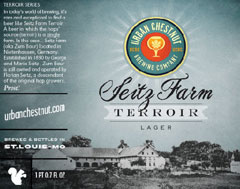 This is happening Saturday and I won’t be there. Who is scheduling my life? Wait, by the time the first beer is poured Saturday at the Urban Chestnut Brewing Hopfenfest I will have already done Saturdays at the Kernel, seen Helen Mirren in The Audience and, the time difference being what it is, be settling in for a pint of something on cask.
This is happening Saturday and I won’t be there. Who is scheduling my life? Wait, by the time the first beer is poured Saturday at the Urban Chestnut Brewing Hopfenfest I will have already done Saturdays at the Kernel, seen Helen Mirren in The Audience and, the time difference being what it is, be settling in for a pint of something on cask.
As greedy as it might be I’ll still pause a moment and wish somebody could put a glass of Seitz Farms Terroir Lager in front of me. Florian Seitz, who I have visited at the family farm in the heart of Bavaria’s Halltertau hop growing region, will in St. Louis to watch drinkers try a beer made with his hops. He doesn’t get to do that very often. “As a grower you are proud when you see what happens with your hops, when the product made from your own product is good,” he said when I was at the farm.
I’d like to see the look on his face Saturday.
And while we’re talking hops:
* More on how opinion has changed about what makes for good hop aroma (in some cases, of course) from Ed Wray.
Descriptions of new varieties used to be accompanied by notes on what percentage of them you could use before the flavour became unacceptable, and I once spoke to a retired Allied brewer who said he was only allowed to use a maximum of 25% Bramling Cross.
For further reading, see Rejected in 1960, Rejoiced in 2015? (Or buy the book.)
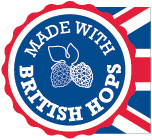 * The British Hop Association has a new logo for brewers to use on pump clips, bottle labels and marketing materials. From the press release: “Ali Capper of the British Hop Association said ‘As a result of our recent work to promote British Hops, brewers were getting in contact wanting to promote the Britishness of their beer and I realised that we needed a new customer-facing logo. We’ve created something that will work at very small or larger sizes, that is clearly British and that promotes the provenance of British Hops.'”
* The British Hop Association has a new logo for brewers to use on pump clips, bottle labels and marketing materials. From the press release: “Ali Capper of the British Hop Association said ‘As a result of our recent work to promote British Hops, brewers were getting in contact wanting to promote the Britishness of their beer and I realised that we needed a new customer-facing logo. We’ve created something that will work at very small or larger sizes, that is clearly British and that promotes the provenance of British Hops.'”
The logo is available at the British Hop Association web site.
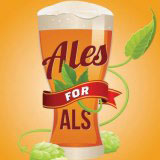 * More hops with numbers, and in this case to support ALS research. Almost three dozen breweries have already signed up for Ales for ALS. Loftus Ranches and Hopunion are giving away a blend of proprietary hops to participating brewers, who will donate a donate a portion of the sales of the beers they make with them to ALS TDI, the world’s leader in ALS research.
* More hops with numbers, and in this case to support ALS research. Almost three dozen breweries have already signed up for Ales for ALS. Loftus Ranches and Hopunion are giving away a blend of proprietary hops to participating brewers, who will donate a donate a portion of the sales of the beers they make with them to ALS TDI, the world’s leader in ALS research.
The geeky details: Vinnie Cilurzo of Russian River Brewing and John Mallett of Bell’s Brewery designed the blend of 35% HBC (which stands for Hop Breeding Company) 462, 25% HBC 369 (otherwise known as Mosaic), 30% HBC 344, and 10% HBC 366.
The ALS Therapy Development Institute (ALS TDI) aims to discover and develop effective treatments and a cure for ALS.
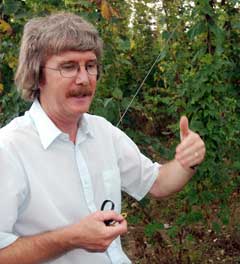 Mark Dredge has an excellent post on a couple of English hop varieties that were once rejected — so officially, I guess, they never became varieties — that now may get fully developed.
Mark Dredge has an excellent post on a couple of English hop varieties that were once rejected — so officially, I guess, they never became varieties — that now may get fully developed.
They’ve got numbers, GP 75 and OZ97a, and who doesn’t feel special brewing with hops before they have names? (Citra was so cool it had two numbers, X-114 and HBC 394, before it became a named hop.) This is potentially good news for English hop growers, who can use all the good news they can get.
There’s a sense among brewers that there’s something different about growing conditions in the Yakima Valley and the southern Hemisphere that makes hops from there more vibrant. That’s not so good for hop growers in England, or in Oregon, for that matter. Maybe not for Germans either, although the Society for Hop Research in Germany recently came up with varieties that seem to have the bold aromas and flavors brewers want. We’ll see how those are doing later this year.
We’ll also see if OZ97a can really deliver “apricot, pineapple, lychee, grapefruit, melon and tangerine.” The photo at the outset is of Peter Darby of Wye Hops in Kent, who is at the center of English hop research. “There’s a lot good already out there. It needs to be rediscovered, almost,” he said in 2011, and he was already at work on it then.
Again, the link for more from Darby.